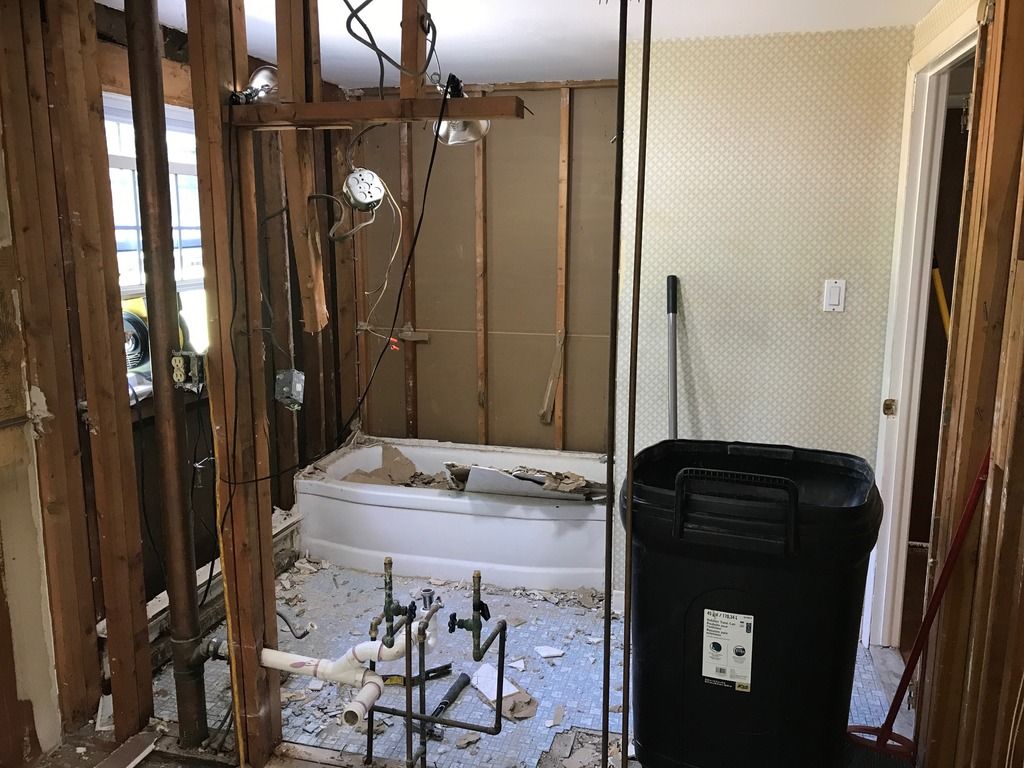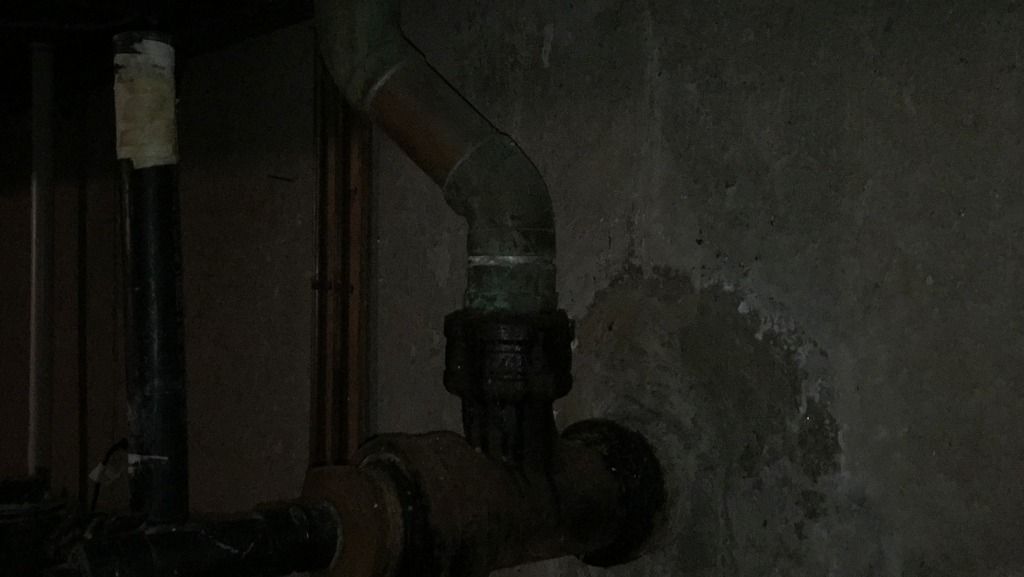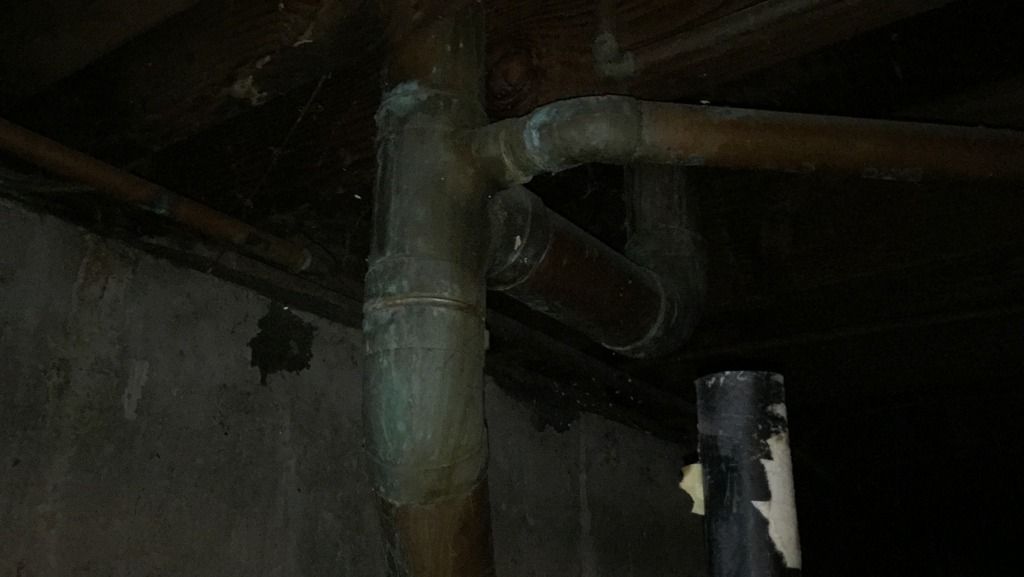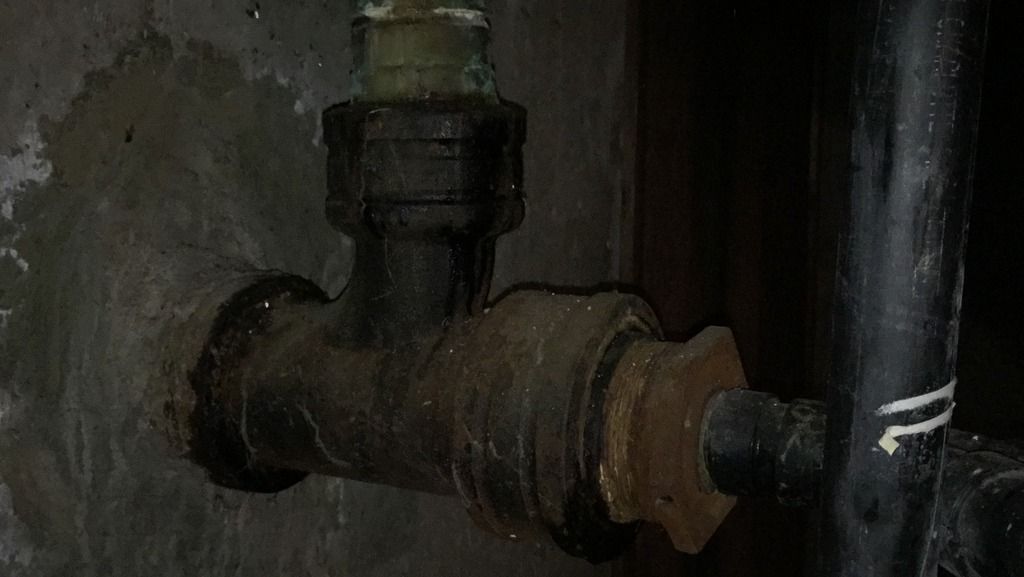Long story short my friend bought a cabin and he asked me to do the plumbing in it. I graduated from a technical highschool and studied plumbing but that was years ago and my career drifted in other directions. Point being at one point i knew this stuff but it's pretty rusty now.
Here's the scope of what i'm doing; one piece shower tub, new shower mixer valve, new vanity and toilet and the associated supply and waste plumbing to each.
His main DWV stack is copper. Where it drops into the builder sewer in the basement the copper goes into a cast iron pipe. I believe it's the old oakum and lead type joint but i could be wrong.
In his downstairs bathroom he wants to make the bathroom bigger. The main stack is run through the wall he wants to pull back meaning i need to move the stack. My main concern is that one cast iron sanitary tee on the building sewer with the oakum joint. I DO NOT want to break that. What would be the best way to get the copper out of it so i can re-plumb the entire DWV system up to that point in PVC and then join into that? I was reading somewhere about older cast iron and newer cast iron having two different sizes and modern PVC not fitting into it correctly. How can i see if that's the case and what's the best way to attach a PVC stack into a cast iron sewer pipe?
In the first picture below that's the main floor bathroom. The one i'm redoing. You can see the main stack on the left come up from the basement and then go up to the second floor. He wants to pull that wall back about two feet to make the bathroom bigger thus moving the stack two feet closer, etc. The upstairs is getting gutted too so moving pipes is no issue.
Thanks!
Picture related. I took them at night so they're not good quality. I'll get better ones later today.




Here's the scope of what i'm doing; one piece shower tub, new shower mixer valve, new vanity and toilet and the associated supply and waste plumbing to each.
His main DWV stack is copper. Where it drops into the builder sewer in the basement the copper goes into a cast iron pipe. I believe it's the old oakum and lead type joint but i could be wrong.
In his downstairs bathroom he wants to make the bathroom bigger. The main stack is run through the wall he wants to pull back meaning i need to move the stack. My main concern is that one cast iron sanitary tee on the building sewer with the oakum joint. I DO NOT want to break that. What would be the best way to get the copper out of it so i can re-plumb the entire DWV system up to that point in PVC and then join into that? I was reading somewhere about older cast iron and newer cast iron having two different sizes and modern PVC not fitting into it correctly. How can i see if that's the case and what's the best way to attach a PVC stack into a cast iron sewer pipe?
In the first picture below that's the main floor bathroom. The one i'm redoing. You can see the main stack on the left come up from the basement and then go up to the second floor. He wants to pull that wall back about two feet to make the bathroom bigger thus moving the stack two feet closer, etc. The upstairs is getting gutted too so moving pipes is no issue.
Thanks!
Picture related. I took them at night so they're not good quality. I'll get better ones later today.




Last edited:





